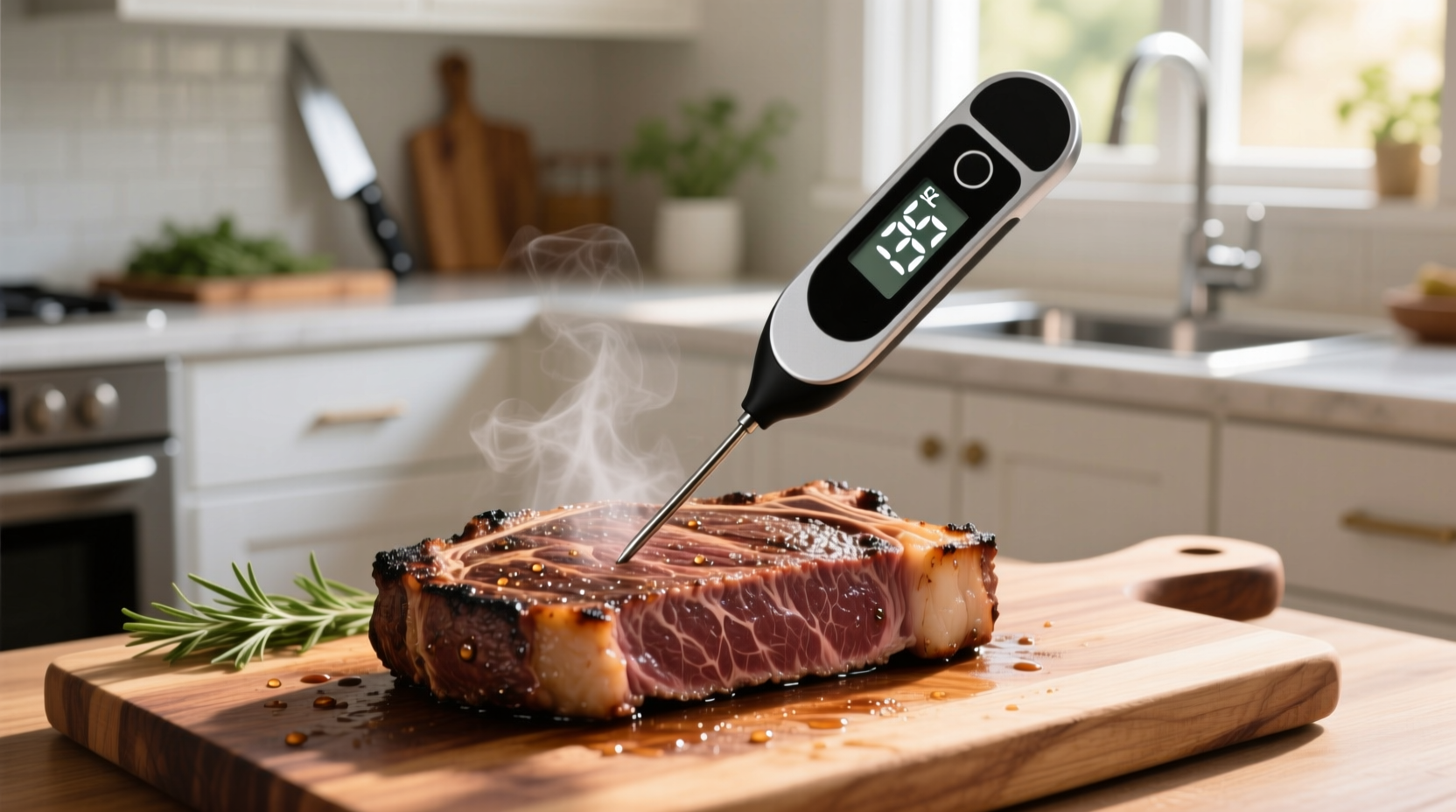The ideal internal temperature for steak depends on your preferred doneness level: rare (120-130°F), medium-rare (130-135°F), medium (135-145°F), medium-well (145-155°F), and well-done (155°F+). For food safety, the USDA recommends a minimum internal temperature of 145°F (63°C) with a 3-minute rest period for steaks.
Getting steak temperature right separates a perfectly juicy cut from a disappointing meal. As a professional chef with years of experience in high-end restaurants, I've seen countless home cooks struggle with this fundamental cooking skill. This guide delivers precise temperature targets backed by food science and culinary expertise—so you can consistently achieve restaurant-quality results at home.
Why Steak Temperature Matters More Than You Think
Temperature isn't just about doneness—it's the key to food safety, texture, and flavor development. Undercooked steak risks E. coli and other pathogens, while overcooked steak becomes tough and dry. The proteins in meat begin to denature at specific temperatures, releasing juices and changing texture dramatically with just a few degrees difference.
| Doneness Level | Internal Temperature (°F) | Internal Temperature (°C) | Visual Characteristics |
|---|---|---|---|
| Rare | 120-130°F | 49-54°C | Cool red center, very soft texture |
| Medium-Rare | 130-135°F | 54-57°C | Warm red center, slightly firm yet yielding |
| Medium | 135-145°F | 57-63°C | Warm pink center, firm but juicy |
| Medium-Well | 145-155°F | 63-68°C | Slightly pink center, firm texture |
| Well-Done | 155°F+ | 68°C+ | Little to no pink, very firm and dry |
USDA Food Safety Guidelines You Must Know
According to the USDA Food Safety and Inspection Service, steaks should reach a minimum internal temperature of 145°F (63°C) with a 3-minute rest period to ensure food safety. This recommendation balances pathogen elimination with maintaining quality—though many chefs prefer cooking to lower temperatures for premium cuts like filet mignon or ribeye when sourced from reputable suppliers.
How to Measure Temperature Accurately Every Time
Your thermometer placement and type dramatically affect readings:
- Digital instant-read thermometers provide the most accurate results in 3-5 seconds
- Insert probe horizontally into the thickest part, avoiding bone or fat
- Take multiple readings across the steak for even cooking verification
- Calibrate your thermometer monthly using ice water (32°F/0°C) or boiling water (212°F/100°C)

The Critical Role of Carryover Cooking
Many home cooks ruin perfectly good steak by ignoring carryover cooking—the continued temperature rise after removal from heat. Food science explains this phenomenon: residual heat from the outer layers transfers inward, raising the internal temperature 5-15°F (3-8°C) during resting. This is why you should remove steak from heat 5°F below your target temperature:
- Thin cuts (under 1.5 inches): Remove 5°F below target
- Thick cuts (1.5+ inches): Remove 10-15°F below target
- Cooked in oven: Expect more carryover than stovetop
Resting Time Guidelines Based on Cut Size
Resting allows juices to redistribute through the meat's protein structure. The optimal resting time depends on steak thickness:
- 1-inch thick steaks: 5 minutes minimum
- 1.5-inch thick steaks: 7-10 minutes
- 2-inch thick steaks or larger: 10-15 minutes
Cover loosely with foil to retain heat without trapping steam that would soften the crust.
What to Do When You Don't Have a Thermometer
While a thermometer is essential for precision, these visual and tactile indicators can help in a pinch:
- Rare: Very soft when pressed, bright red center
- Medium-rare: Soft with slight resistance, warm red center
- Medium: Slightly firm, pink center
- Medium-well: Firm with little give, small amount of pink
- Well-done: Very firm, little to no pink
Use the "hand test" technique: compare the firmness of your steak to the fleshy part of your palm below the thumb when making different hand shapes.
Common Steak Temperature Mistakes to Avoid
Even experienced cooks make these critical errors:
- Not allowing enough time for the thermometer to stabilize
- Opening the grill lid too frequently during cooking
- Resting on a cold surface that draws heat away
- Using the same thermometer for sweet and savory foods without proper cleaning
- Not accounting for altitude (boiling point drops 1°F per 500 feet elevation)











 浙公网安备
33010002000092号
浙公网安备
33010002000092号 浙B2-20120091-4
浙B2-20120091-4